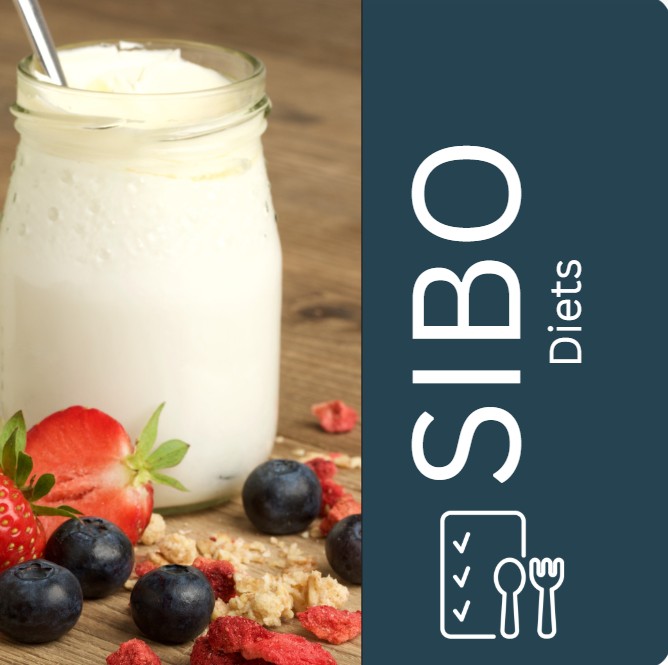Histamine Itolerance (HIT)
Content
1. What is Histamine?
1.1 Functions of Histamine
2. What is Histamine Intolerance?
2.1 Causes of Histamine Intolerance
2.2 Symptoms of Histamine Intolerance
2.3 What to Do in Case of Histamine Intolerance
2.4 Histamine Intolerance and SIBO
3. Histamine and Nutrition
3.1 Histamine-Rich Foods
3.2 Histamine-Releasing Foods
3.3 Foods That Block Histamine Breakdown
3.4 Suitable Foods for HIT
1. What is Histamine?
Histamine belongs to the group of biogenic amines (compounds derived from ammonia that are produced by biological organisms). As a result, histamine is naturally found in both animal and plant cells.
1.1 Functions of Histamine
In the human body, histamine functions as a tissue hormone and plays multiple roles. One of its key functions is in inflammatory and allergy / allergic reactions. Mast cells (a type of immune cell) store large amounts of histamine and release it in response to allergens. This causes surrounding blood vessels to dilate, allowing other immune components to access and combat the perceived threat more effectively.
Additionally, histamine is involved in processes such as regulating the sleep-wake cycle (1), stimulating gastric acid secretion (2), and many other functions.
A well-functioning histamine metabolism is therefore essential for overall health.
2. What is Histamine Intolerance?
When disturbances occur in histamine metabolism, particularly in its breakdown, histamine intolerance (HIT) may develop. This means that excessive histamine accumulates in the body. The term histamine intolerance is often used interchangeably with histamine sensitivity.
2.1 Causes of Histamine Intolerance
The causes of high histamine levels and resulting intolerance can be categorized into three main groups:
- The body may release excessive histamine in response to stress.
- Too much histamine may be ingested through food or produced within the body.
- Histamine breakdown occurs too slowly (for example, due to inhibition of histamine-degrading enzymes such as DAO (diamine oxidase) or HNMT (histamine-N-methyltransferase)).
Certain dietary components, such as alcohol and caffeine, can inhibit these histamine-degrading enzymes. Additionally, heavy metal exposure and impaired liver function can also affect enzyme activity.
An overproduction of histamine may occur due to dysbiosis (3), as some gut bacteria produce histamine. If these bacteria dominate, the intestinal DAO enzymes may not be able to degrade histamine quickly enough, allowing excessive histamine to enter the bloodstream. Leaky gut can also contribute to HIT (4).
2.2 Symptoms of Histamine Intolerance
The symptoms of HIT are diverse and can be categorized into different groups:
Gastrointestinal issues: nausea, stomach cramps, diarrhea, constipation, and intestinal cramps.
Skin reactions: itching, hives, swelling, redness, or rashes.
Circulatory system symptoms: low blood pressure, dizziness, sweating, or heart palpitations.
Neurological and systemic effects: difficulty concentrating, brain fog, tingling sensations, headaches, restlessness, changes in appetite, increased mucus production, depression, fatigue, mood swings, sleep disturbances, and menstrual problems.
2.3 What to Do in Case of Histamine Intolerance
The primary approach to managing HIT involves symptom relief and addressing the underlying causes. This includes treatments like dietary adjustments, medication, gut health support, stress reduction, and lifestyle changes.
Enzyme supplementation: Diamine oxidase supplements can be taken before histamine-rich meals to aid in histamine breakdown.
Antihistamines: These can help alleviate symptoms such as itching, rashes, or digestive discomfort.
Gut health: A balanced gut microbiome supports DAO production. Probiotics or prebiotic foods can be beneficial, especially in cases of dysbiosis. Treating underlying gut conditions such as leaky gut (4) or SIBO (small intestinal bacterial overgrowth) (5) is crucial for HIT therapy.
Stress management: Stress triggers histamine release and worsens symptoms. Techniques such as meditation, yoga, or progressive muscle relaxation may help.
Managing HIT should be done in collaboration with a doctor, naturopath, or nutritionist.
2.4 Histamine Intolerance and SIBO
In SIBO (small intestinal bacterial overgrowth), excessive bacteria colonize the small intestine. This bacterial overgrowth stresses the gut and triggers inflammation, which leads to histamine release. Additionally, some bacteria directly produce histamine. If these bacteria overpopulate the small intestine, histamine-degrading enzymes may become overwhelmed, resulting in increased histamine absorption into the body. SIBO can be diagnosed using breath testing.
3. Histamine and Nutrition
One possible cause of histamine intolerance is excessive histamine intake from food. If the enzymes responsible for histamine breakdown (DAO and HNMT) are already overburdened, HIT symptoms may develop.
3.1 Histamine-Rich Foods
Histamine-rich foods include aged, preserved, fermented, or smoked foods. Examples include aged cheese, red wine, sauerkraut, and salami (4). It is important to note that histamine cannot be destroyed by cooking or freezing (5). Additionally, histamine levels increase over time in certain foods due to bacterial breakdown of protein components.
3.2 Histamine-Releasing Foods
Some foods contain little histamine themselves but can trigger histamine release in the body (4). These are called histamine liberators and include alcohol, strawberries, citrus fruits, tomatoes, and shellfish (4).
3.3 Foods That Block Histamine Breakdown
Certain foods can inhibit histamine-degrading enzymes. These include caffeine, alcohol, and the flavor enhancer glutamate (4,5).
Additionally, other biogenic amines compete with histamine for DAO enzyme activity. If DAO is occupied breaking down these other amines, histamine may accumulate. Foods high in other biogenic amines include pineapple, pears, peanuts, kiwi, and raspberries (4).
3.4 Suitable Foods for HIT
Low-histamine foods suitable for people with HIT include potatoes, corn, rice, apples, apricots, cherries, and coconut (4). Freshness is crucial, especially for protein-containing foods. When storing leftovers, rapid cooling and freezing, as well as quick thawing and consumption, are recommended (4).
A diet tailored to individual symptoms and tolerances is advisable for managing HIT. Nutritionists and doctors can provide valuable guidance.
- Siegel JM. The neurotransmitters of sleep. J Clin Psychiatry. 2004;65 Suppl 16(Suppl 16):4-7. PMID: 15575797; PMCID: PMC8761080.
- Barocelli E, Ballabeni V. Histamine in the control of gastric acid secretion: a topic review. Pharmacol Res. 2003 Apr;47(4):299-304. doi: 10.1016/s1043-6618(03)00009-4. PMID: 12644386.
- Sánchez-Pérez S, Comas-Basté O, Duelo A, Veciana-Nogués MT, Berlanga M, Latorre-Moratalla ML, Vidal-Carou MC. Intestinal Dysbiosis in Patients with Histamine Intolerance. Nutrients. 2022 Apr 23;14(9):1774. doi: 10.3390/nu14091774. PMID: 35565742; PMCID: PMC9102523.
- SIGHI-Merkblatt_histaminarmeErnaehrung.pdf (histaminintoleranz.ch); last checked 29.04.2023
- Histaminintoleranz; last checked 30.11.2024





















